There is a certain shock that accompanies your first Scott Seekins sighting. You're in downtown Minneapolis, or Uptown, or Northeast, when a man wearing either an all-black or all-white suit, with chunky specs, a thick headband and a shock of dark hair, comes into view. There he is, striding down Lyndale Avenue, as if he has just stepped out of another era instead of the No. 4 bus.
A commenter on Seekins' "People of Minneapolis" Reddit thread sums up the popular public reaction: "I was like, 'Who the F is this guy and what is his deal?' "
Minneapolitans have been noticing the McKnight-awarded artist — "a work of art who creates works of art," as a local frame shop described him — since he began dressing exclusively in monochrome as an MCAD student 50 years ago.
Over the decades, as he scuttled about the city on foot or transit (Seekins hasn't driven since failing his drivers' test as a teenager), he became a sort of aesthete's groundhog. Forget calendars. In Minneapolis, Seekins' transition from black suit to white determines the seasons' change.
Seekins has become such an icon that websites have sprung up to document sightings (SeekingSeekins.com). His face appears on bumper stickers ("Start Seeing Seekins") as often as in his signature self-portraits. The late Cafe Maude named a drink after him (gin, orange bitters, St. Germain). Local rock band Pink Mink immortalized him in song. ("Have you seen him?") There have been Scott Seekins flash mobs and lookalike contests.
At this point, Seekins' black and white suits have been inexorably woven into Minneapolis' fabric. Despite his eroding habitat, as commercial districts face emptying storefronts and increased crime, he remains the ultimate city creature. He's a piece of installation art. A visual metaphor for our communal embrace of the seasons. A shared cultural touchpoint who instills a sense of camaraderie.
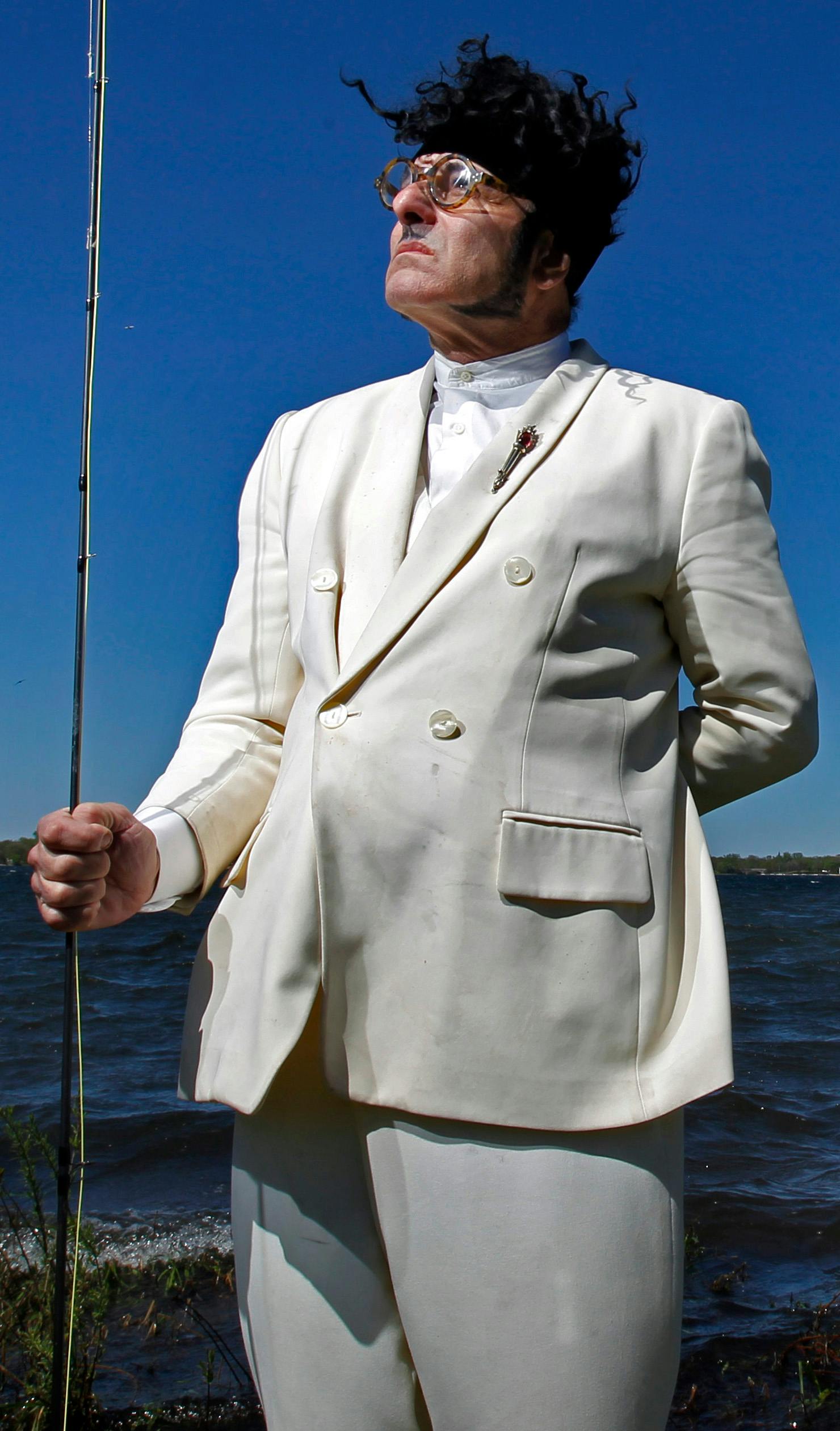
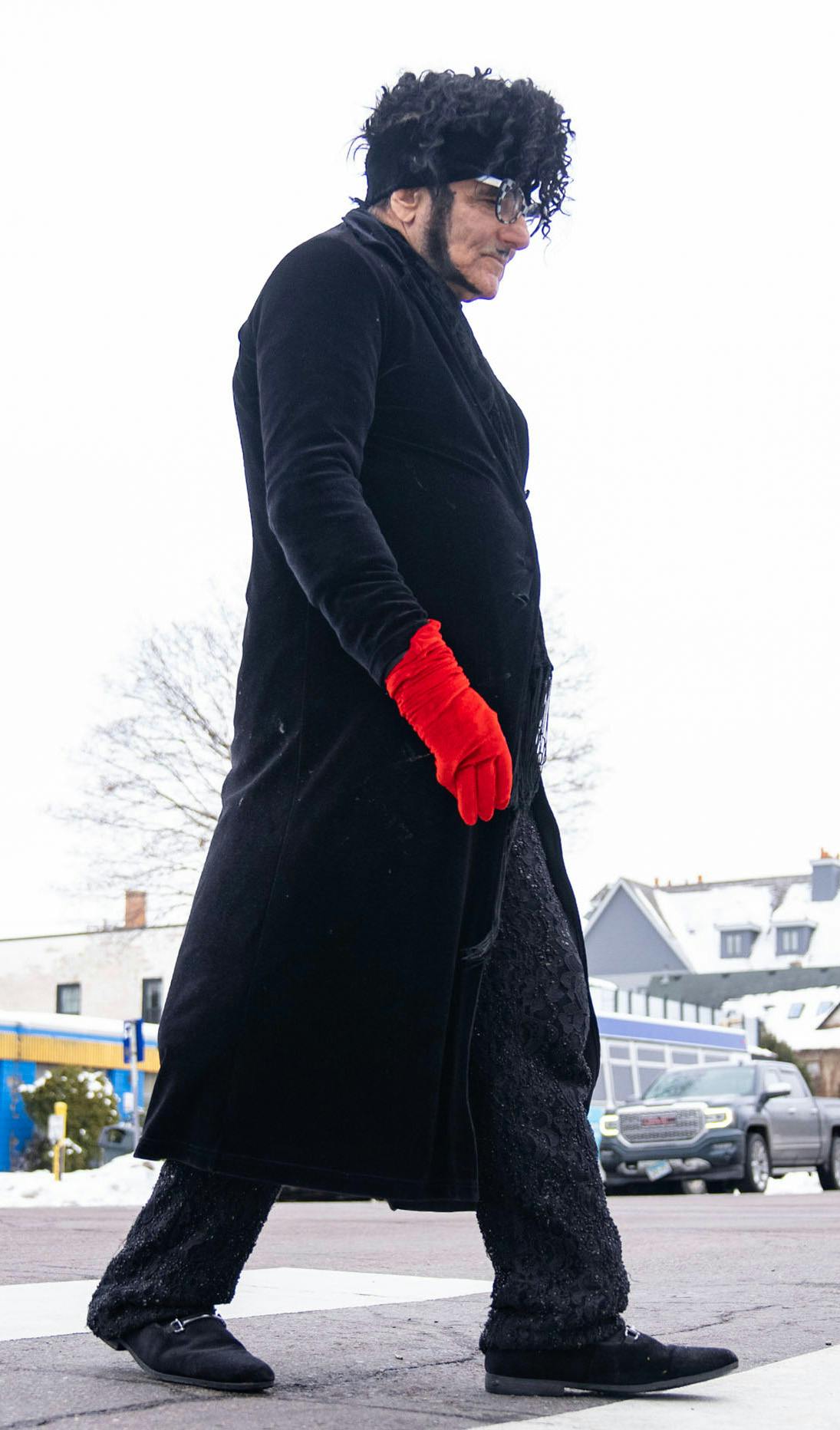
"Having him walking around was a signal to the rest of us in Minneapolis that we didn't have to be so constrained and should be more inclusive," says former Mayor R.T. Rybak, of encountering Seekins in the 1980s. "Knowing he's still out there is super-comforting to me and people who came of age in Minneapolis in that time, because so many of the touchstones of that period when Minneapolis was becoming a much cooler city are gone."
Over the years, Seekins has been called a decider of seasons. A champion of the individual. A doo-wop Zorro all shook up with Prince. ("I looked like this a decade before Prince," Seekins counters.) People say he's an anachronism. A curio. A (somewhat odd) Everyman to an entire city. Everyone's favorite familiar stranger.
Despite being the subject of much public opinion — his look has attracted harassment; his art has attracted controversy — Seekins has remained something of an enigma.
"It's really hard to get to know people closer when you're kind of, like, this thing," Seekins admits.
He's the guy everybody knows, but knows nothing about. And nothing about him is what you'd expect.
Devoted to art
Seekins' tiny studio beside Loring Park has a paint-spattered floor and walls covered in artwork, photos, news clippings and ephemera. There's jazz on the stereo and a stack of VHS tapes in the corner. (Seekins has never owned a computer, and only once flew on a plane.)
The Minneapolis art scene isn't what it once was, back in the '80s when the Warehouse District's Wyman Building was stuffed with galleries that drew big crowds. Corporate clients were buying and artists pollinated at the New French Cafe, where Seekins says he was the first and last customer.
Since then, the city has been less hospitable to working artists — Seekins is among the rare few who don't have a day job. And not for lack of trying. During his 20s, Seekins says, he called on maybe 100 businesses looking for work and didn't get one call back, which he attributes to his unusual look.
If his public persona has excluded Seekins from mainstream employment, his role as a living billboard does help to advertise his artwork. That attention has allowed Seekins to eke out an existence making the art he wants to make, without resorting to painting the more lucrative stuff that people buy to hang behind their couches.
Although Seekins' recent work depicts animals covered in vibrant patterns and symbols, his most frequent subject is himself.

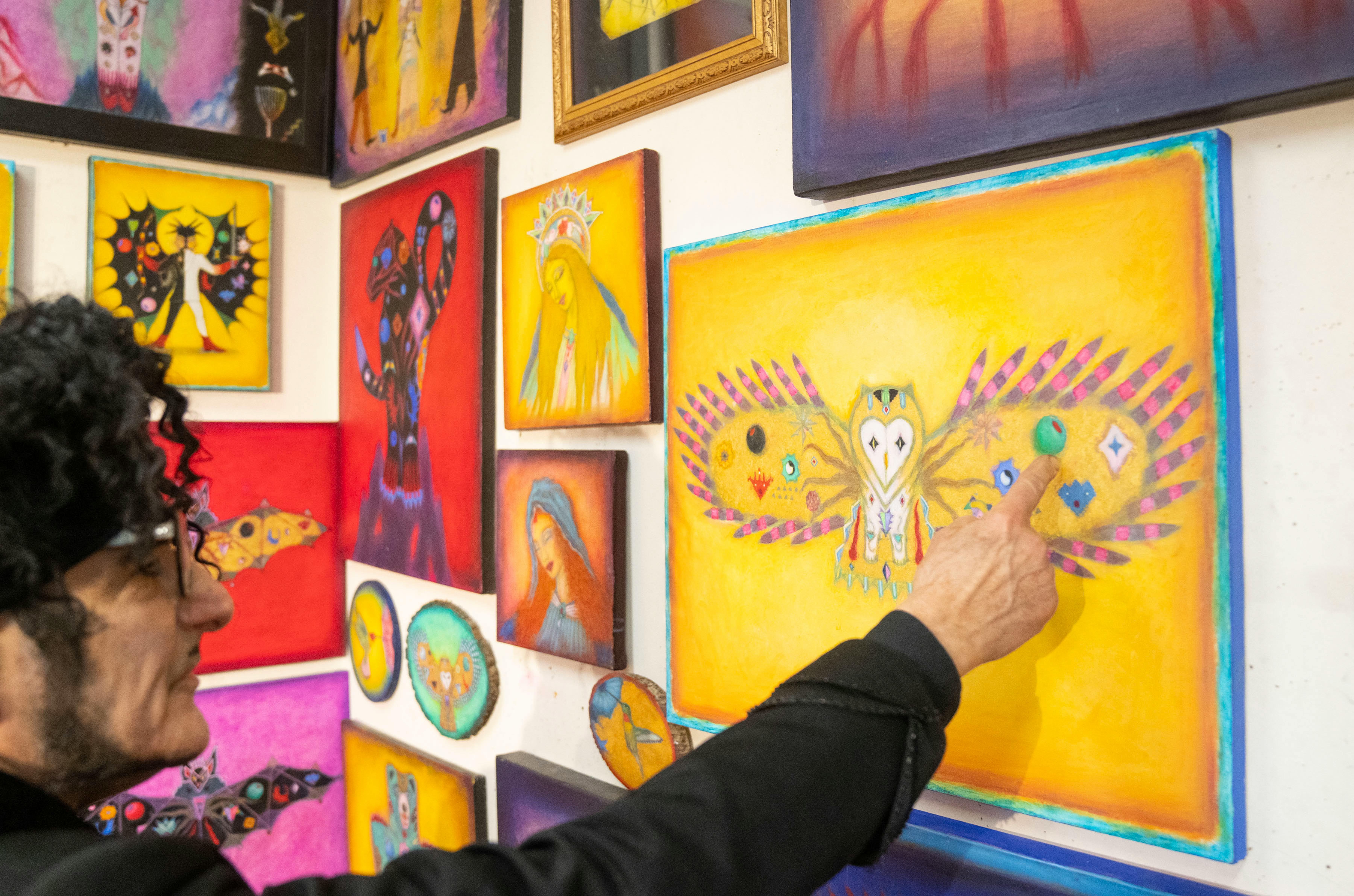
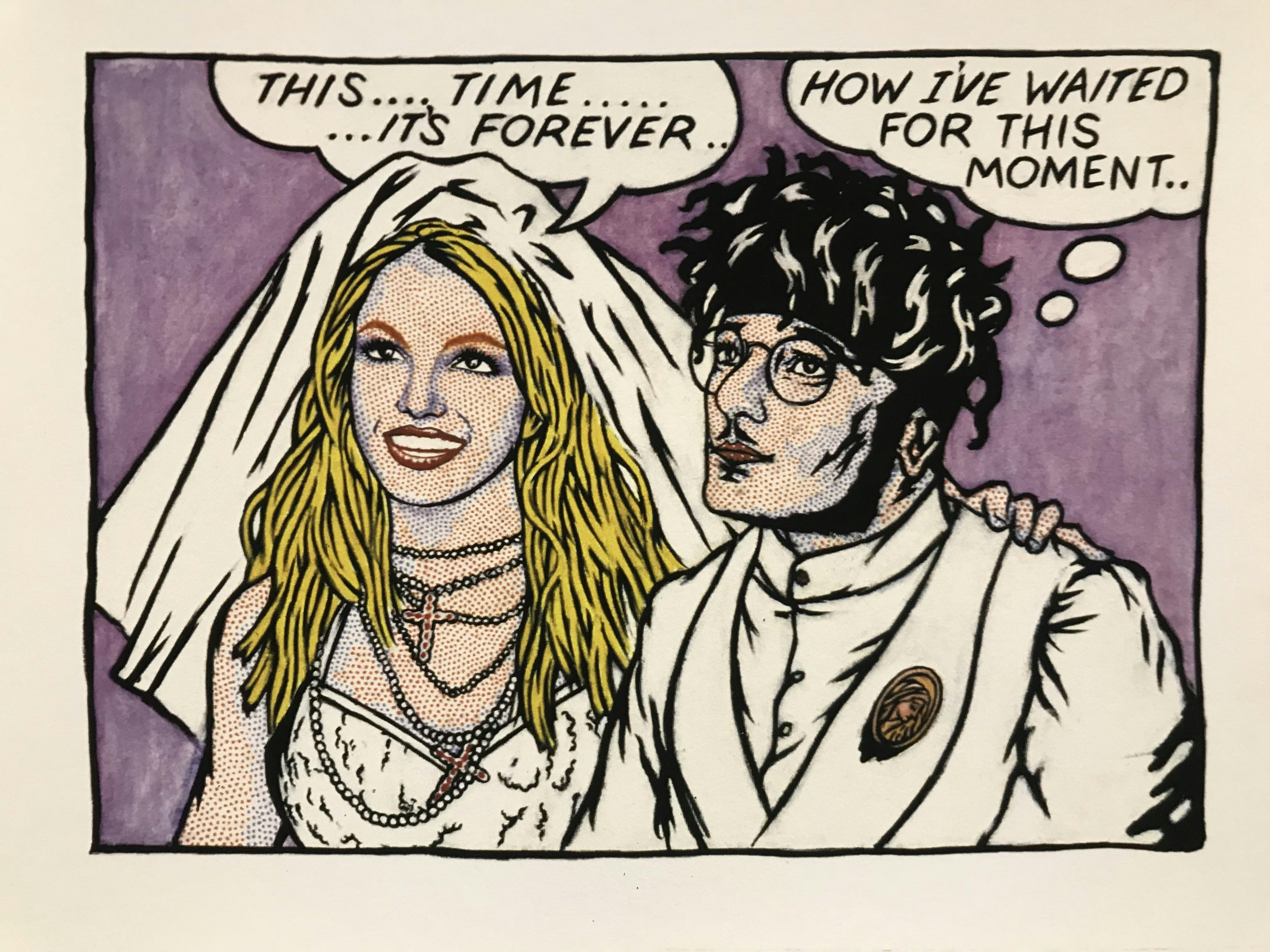
There's the sign series, where he was photographed, in various incarnations, standing at a busy intersection holding different placards ("art for food," etc.). In his studio, there are several nearly life-size self-portraits. A painting of Seekins fly fishing (a longtime hobby, along with model trains). A dueling black-suited and white-suited version of himself. Two of his heads making out.
"I find the more I paint myself, the more it's wanted and liked, and so you become the icon," he explained. "I didn't plan on being this special thing back when I first started. It just kind of happened."
As it happened
It was the late 1960s, and Seekins was busing between his parents' home in South St. Paul and the Minneapolis College of Art and Design. One day, while waiting for a transfer, he popped into a clothing shop and discovered its collection of suits from the late 1800s.
Thus began his unwavering look: black suit from September or October until April or May, whenever he senses it's time to go white ("You feel it"). He even wears the suits while wading into trout streams. "Guys going by in pickup trucks about sprained their necks looking at him," recalled local arts writer Doug Hanson, of accompanying Seekins on rural fishing expeditions.
It's getting harder to find the vintage double-breasted frock coats and linen ensembles Seekins originally wore, so he regularly scours antique and thrift shops to replenish his stock. "Every summer you go through about 50 items of white," he said. "They just get trashed."
Seekins isn't the only one fascinated by his own image. Both Getty Images and Minneapolis Institute of Art own photographs of him. Seekins' striking look even landed him a 1983 City Pages cover, with a snake wrapped around his neck (he's also an amateur herpetologist). Today, his face looks unchanged, right down to the tiny, pyramid mustache, except his chinstrap betrays a hint of gray, and hair extensions thicken his coif. (Seekins declined to share his age, but a 1994 Star Tribune profile noted he was then 47.)
Seekins' looking like an outsider reflects his feeling like one. "In this town, conformity rules," he said. "Even in high school I wanted to be different. And once I started doing it, I just stuck with it."
His strong sense of individuality may stem from his having been abandoned by his birth parents. He says that knowing essentially nothing about them left him untethered to history or heritage.


After being adopted as a baby, Seekins forged a close relationship with his mother. "She was so nice to all the guests I brought over," he said. "I thought that's how mothers would be. And then when I started dating people, none of [their mothers] were that nice."
His dates' parents, apparently, critiqued his appearance, financial stability and age, as he has often dated much younger women. His last serious relationship was a few years ago, with another artist. One of her paintings still hangs in his studio.
Though he's never married, Seekins' Pop Art portrait of himself wedding Britney Spears has become perhaps his most recognized work. Although Spears may seem an unlikely muse for Seekins, who seems entirely divorced from pop culture, they do have one thing in common: The public loves to try to define them.
Seeking Seekins
"It's good luck to see Scott Seekins on the first day of the new year," begins the first entry on Seekingseekins.com, with a sighting by Jarrin Jambik, the Minneapolis web developer who launched the site in 2009. (Jambik doesn't intend the site to be disparaging: "I like his art, his attitude, his presentation and the amount of work he puts into being Scott Seekins.")
On the site, sightings are documented weekly, if not daily. Paparazzi-style photos capture Seekins, often by himself, striding down the sidewalk, at the CC Club, the 331, the Wedge, his shoulders slightly slumped, facial expression somewhere between pensive and stern.
Seekins is receptive to people taking selfies with him, though you wouldn't know it from his unwillingness to smile or so much as glance toward the camera lens. He's frequently accessorized with a coffee, tote bag and his three-ring binder, a "mobile gallery" containing archival prints for $60 to $100 each. (Not a pushy salesman, he only opens the binder if people inquire. He also sells work through galleries.)
Most online commenters consider Seekins an analog celebrity in our midst. ("I'm always energized and inspired when I spot him. He looks like he's going or coming from somewhere interesting.") But he's also the subject of unsubstantiated rumors, as commenters have accused Seekins of everything from hitting on their girlfriend to stealing a potted plant.
What's clear is that Seekins has sacrificed any sense of public privacy for the sake of enabling his art. He can't so much cough in a library carrel (actual example) without it being documented online.
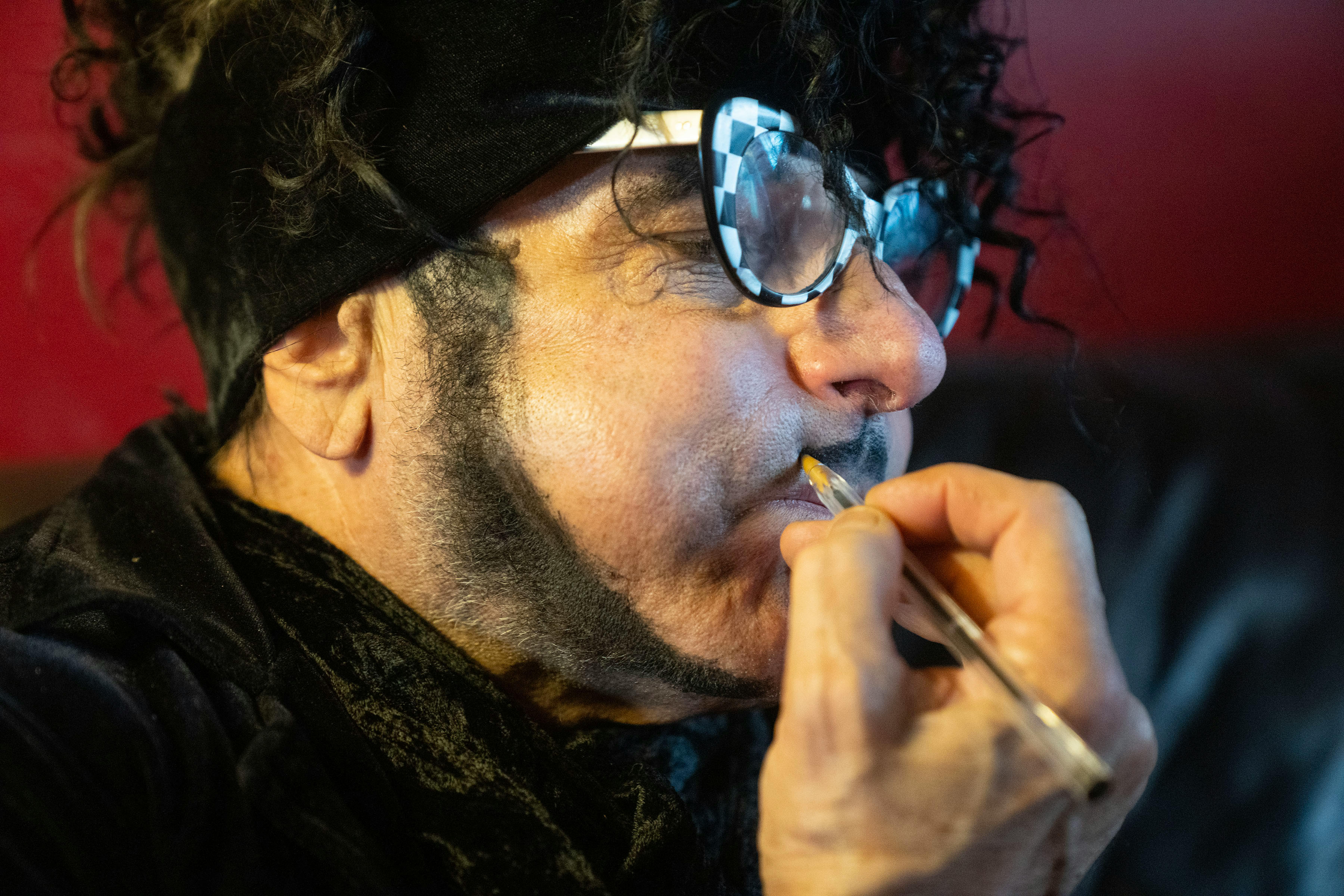
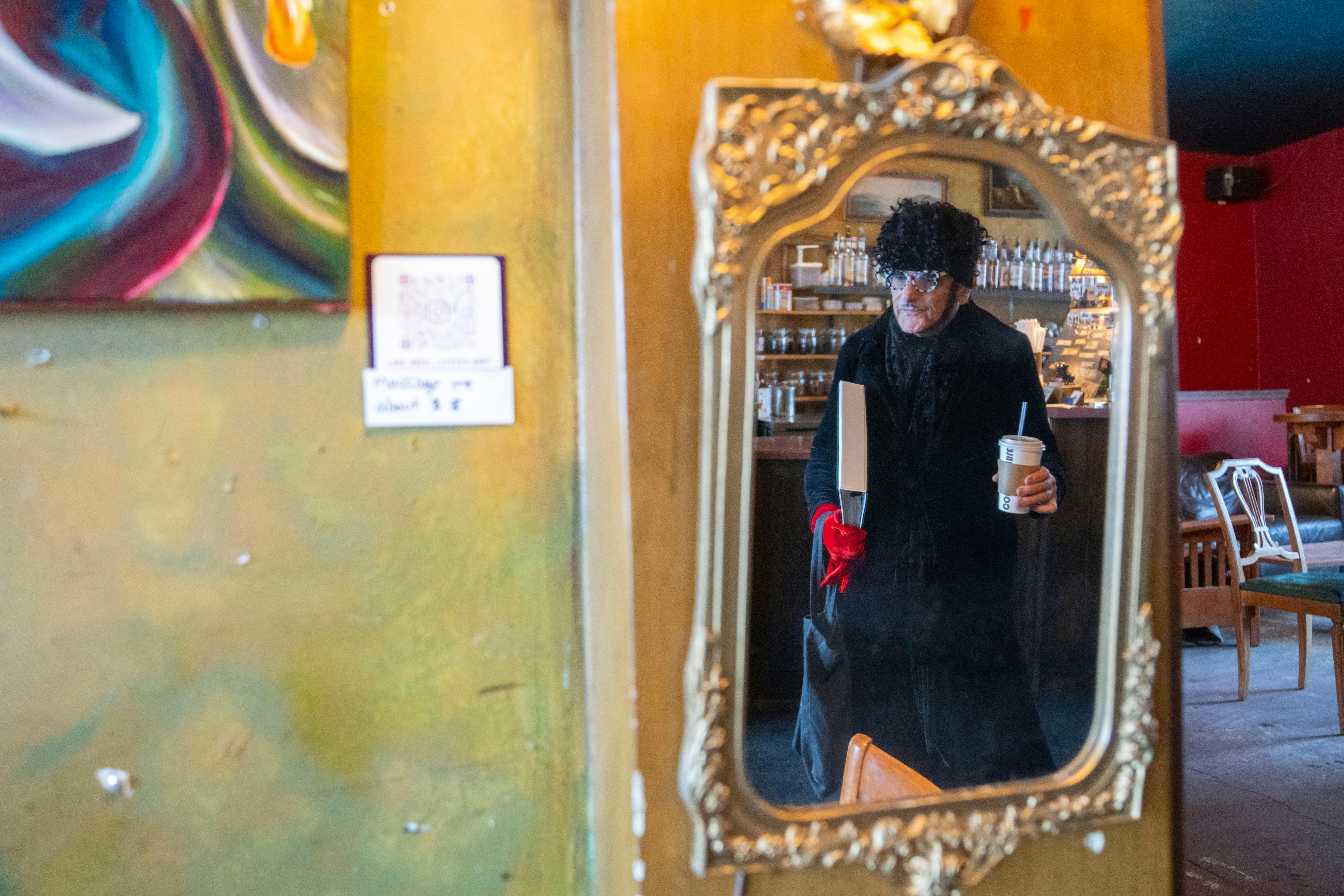

And while his appearance has drawn plenty of positive attention — he claims Bonnie Raitt picked him up hitchhiking on the West Bank, back in the '70s — it has also subjected him to threats. Often, insults are shouted from passing cars. (Seekins took one of the most memorable — "You look like you've got a cat on your head," followed by an expletive — and incorporated it in a painting.)
But overall, Seekins says, the positives of recognition outweigh the negatives. "Sometimes it does get hard, and sometimes it is scary," he admitted. "But other times it's fun. Probably 99% are nice to you and kind of think you're an interesting, important person."
"As they're talking about you, you're still relevant," he noted.
In 2016, Seekins perhaps unwittingly inserted himself into the art world's conversation around cultural appropriation, with a series of works inspired by the Dakota War of 1862. While Seekins, a devoted researcher, has often adopted a range of artistic styles and depicted himself within historic scenes (including Jesus' crucifixion and Last Supper), this series drew protests.
Some Native Americans complained that Seekins was exploiting their heritage. Seekins says his goal was to show the harm of white settlement, and maintains that artists should be able to express themselves in subject matters and styles outside their own culture. Adding to the complexity, Seekins notes that at the time, he was unaware of his ethnicity. (A recent DNA test suggested his ancestors were primarily from Syria, Russia and the Balkans.)
Knowing Seekins
Although Seekins may seem like a loner, he has cultivated a network of longtime friends and collectors, some of whom own dozens of his pieces.
Many who know Seekins were initially intimidated by his appearance, but soon found he wasn't so much aloof as shy.
"People think he's weird, but he's not, he's a normal guy," said Seekins' friend Steve Ozone, a Minneapolis photographer. "He just has his own identity, and his own way of living, which I really respect."
Plus, Ozone quipped, "Who else in Minneapolis can say they've been relevant for the last 50 years?"
Generations of young folks have cycled through the city's hippest nodes since Seekins adopted his uniform. And, with no retirement in sight, he'll be there when the next crop moves on, beating against the current of conformity, binder of artwork tucked under his arm.

